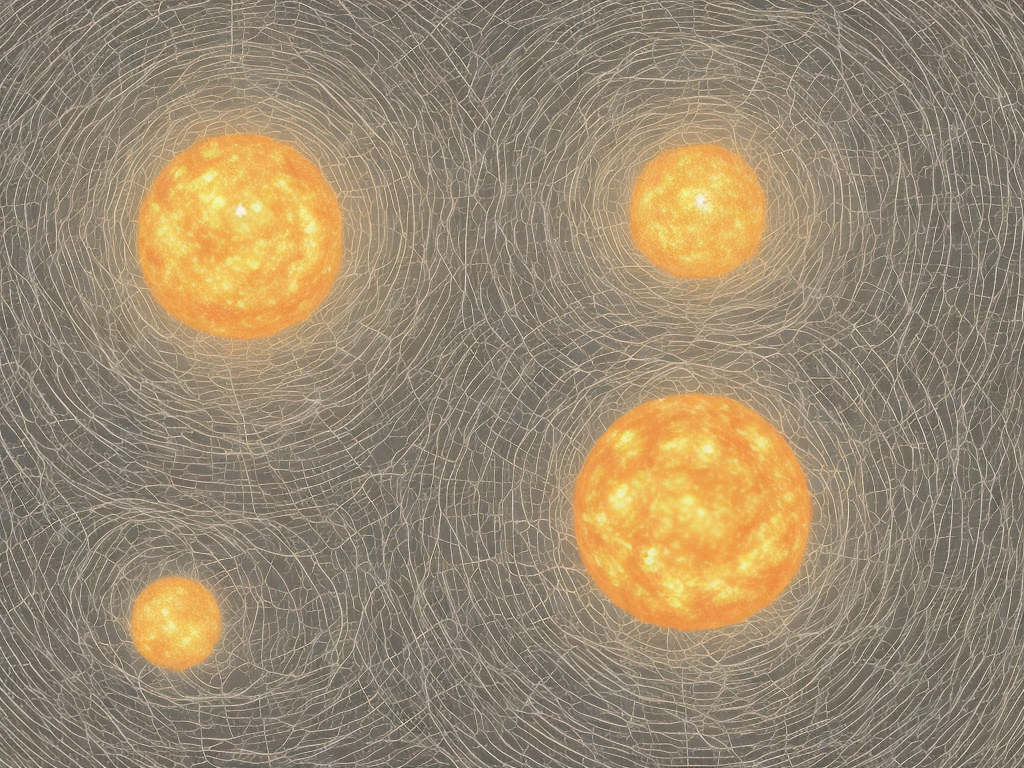
Huygens Principle is a fundamental law of physics that describes how waves propagate through space. It is named after the Dutch physicist Christiaan Huygens, who first proposed the principle in the 17th century.
Huygens Principle states that every point on a wavefront can be considered as a source of secondary waves, which spread out in all directions at the same speed as the original wave. These secondary waves interfere with each other, producing a new wavefront that moves forward in the direction of the original wave.
The key idea behind Huygens Principle is that waves are not purely linear phenomena. Instead, they are the result of complex interactions between multiple sources that create a complex pattern of interference and diffraction.
Huygens Principle applies to all types of waves, including light, sound, and water waves. In each case, the principle explains how the wave spreads out from its source and interacts with its environment.
To understand Huygens Principle in more detail, it is helpful to examine some of its key concepts and implications.
Wavefronts and Rays
In wave theory, the concept of a wavefront is used to describe the shape and position of a wave at a specific instant in time. It is a plane that is tangent to all of the individual waves that make up the complete wave pattern.
By contrast, the concept of a ray describes the direction in which a wave is propagating. It is a line that is perpendicular to the wavefront and indicates the path that the wave is following.
Huygens Principle relies on the concept of wavefronts to explain how waves propagate. Specifically, it states that every point on a wavefront can be considered as a source for secondary waves, which spread out in all directions at the same speed as the original wave.
These secondary waves interfere with each other, causing the original wavefront to be replaced by a new one. The new wavefront is tangent to the secondary waves, just as the original wavefront was tangent to the individual waves that made it up.
Diffraction and Interference
The key to understanding Huygens Principle is to recognize that waves are capable of diffraction and interference. When a wave encounters an obstacle or passes through a narrow opening, it bends and spreads out into the surrounding space.
Similarly, when two waves meet, they can either reinforce or cancel each other out, depending on the relative phase of their individual components.
Huygens Principle takes advantage of these properties to explain how waves propagate through space. By treating each point on a wavefront as a separate source, it is possible to model the complex interactions that occur between waves as they move through the environment.
For example, if a wave passes through a narrow opening, it will be diffracted and spread out into a circular pattern on the other side. This is because each point on the wavefront can be thought of as a source for secondary waves, and these secondary waves spread out in all directions, creating a diffraction pattern.
Similarly, if two waves meet, they will interfere with each other in a complex way, creating a new wave pattern that reflects their relative phase and amplitude. Huygens Principle allows us to model this interaction by treating each point on the wavefront as a source for secondary waves, and then calculating how these secondary waves interfere with each other.
Applications of Huygens Principle
Huygens Principle has many practical applications in various areas of science and engineering. Some of the most important include:
- Optics: Huygens Principle is central to the study of optics, which is the science of light and its interaction with matter. In optics, the principle is used to explain how light waves propagate through lenses, mirrors, and other optical devices.
- Acoustics: Huygens Principle is also important in acoustics, which is the science of sound and its interaction with matter. In acoustics, the principle is used to explain how sound waves propagate through complex environments, such as concert halls and auditoriums.
- Diffraction gratings: Huygens Principle is also used to design diffraction gratings, which are optical devices that use diffraction to separate light into its component colors. A diffraction grating is a series of closely spaced parallel lines that act like a series of narrow slits, causing incoming light waves to interfere with each other and create a diffraction pattern.
- Electromagnetic theory: Huygens Principle also plays an important role in electromagnetic theory, which describes the behavior of electromagnetic waves, such as radio waves, microwaves, and X-rays. In this context, the principle is used to explain how electromagnetic waves propagate through space and interact with matter.
Limitations of Huygens Principle
While Huygens Principle is a powerful tool for understanding the behavior of waves, it is not a complete theory. In some cases, it fails to accurately model the behavior of waves, and more advanced techniques are needed to explain what is happening.
One limitation of Huygens Principle is that it assumes that waves propagate in a straight line. In reality, waves can be affected by a variety of factors, such as gravity, atmospheric turbulence, and the presence of other waves. These effects can cause waves to change direction, speed up or slow down, and interact with each other in unpredictable ways.
Another limitation of Huygens Principle is that it does not account for the particle-like properties of waves, such as their energy and momentum. For example, in some situations, waves can behave like particles, exhibiting phenomena such as diffraction and interference.
Despite these limitations, Huygens Principle remains a powerful tool for understanding the behavior of waves in a wide range of contexts. By treating every point on a wavefront as a source for secondary waves, it allows us to model the complex interactions that occur between waves as they move through space, and to make predictions about their behavior in different environments.
 Self-Instruct
Self-Instruct